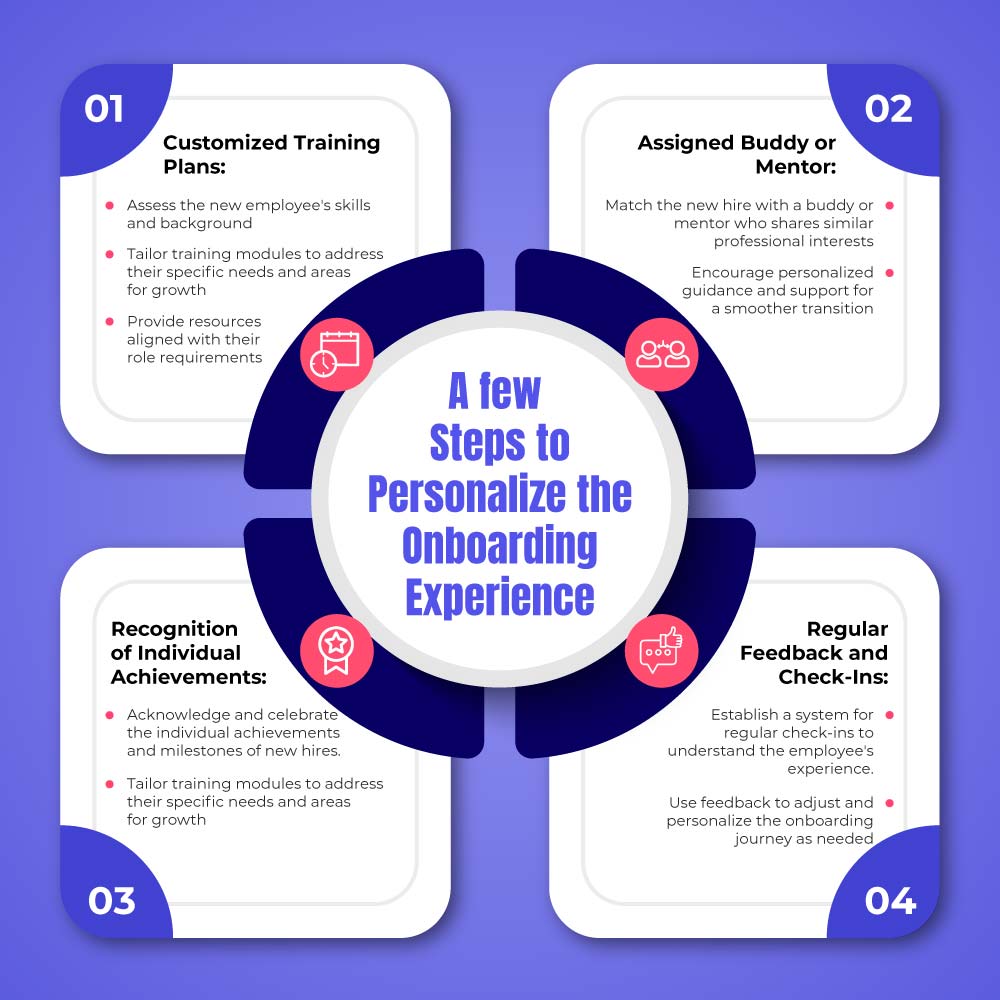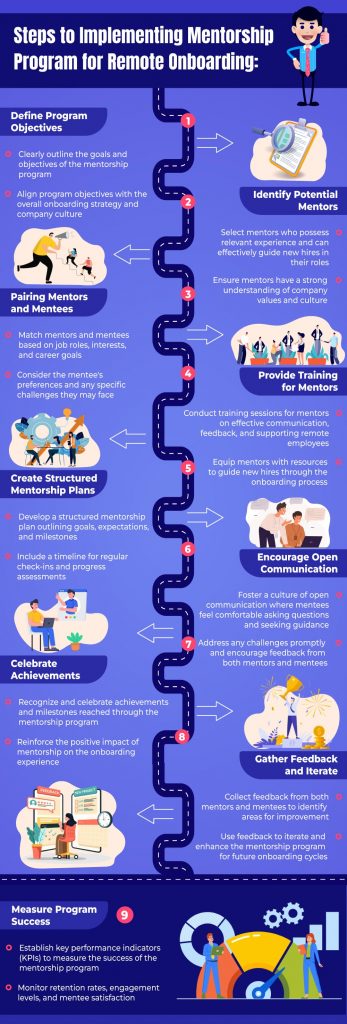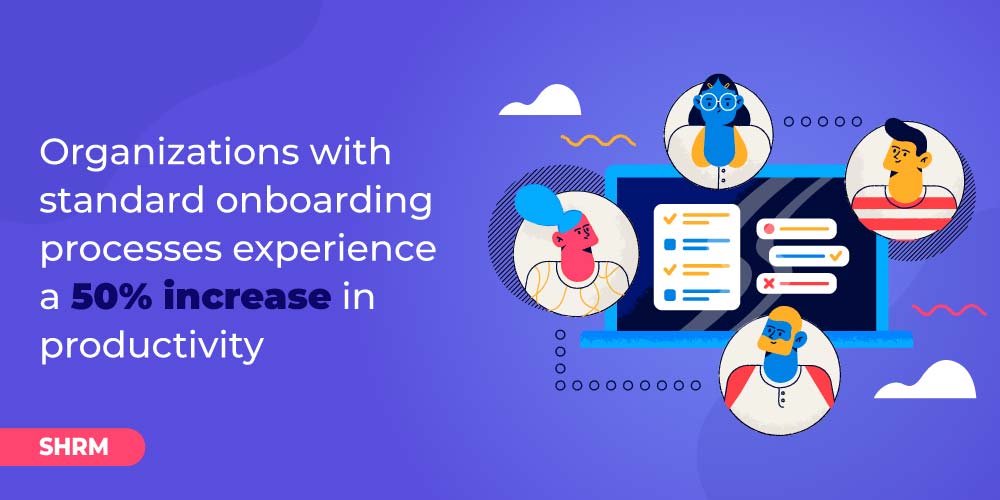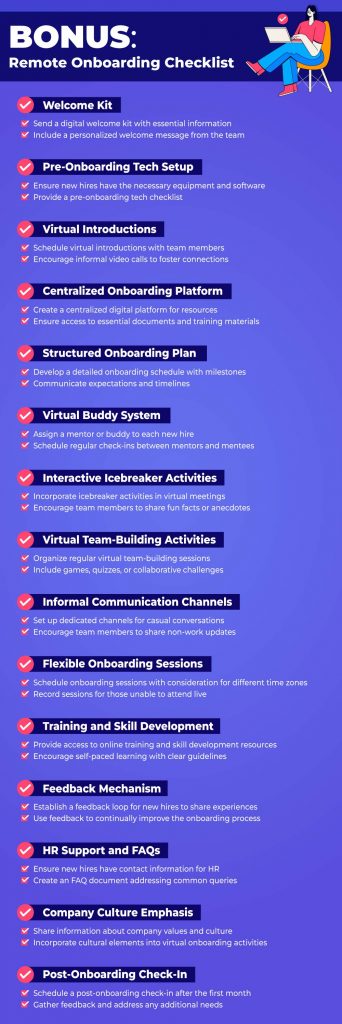Onboarding Process: A Guide to Success for Remote Teams
In the ever-evolving landscape of remote work, effective onboarding has become a cornerstone of building engaged and productive teams. Whether you’re a seasoned remote organization or new to the digital frontier, mastering the art of remote onboarding is a strategic imperative. This guide unveils best practices, actionable tips, and a roadmap to ensure your onboarding process not only sets the stage for success but propels it forward.
Best Practices for Seamless Remote Onboarding: Building the Foundation
Crafting a Digital Welcome Kit
Offering a warm welcome is crucial in a virtual environment. A comprehensive digital welcome kit can include an introduction to the team, company values, an Onboarding agenda, Important HR documents to sign, and essential resources.
As soon as you have finished hiring new staff, send out a welcome packet.
Receiving freebies and treats is the most thrilling thing ever. Send out a welcome package containing the following items whenever your candidate accepts your offer of employment:
- The corporate handbook or other literature about the company
- Corporate swag
- A delightful addition to their remote workplace
Getting this package will reduce your first nerves and foster goodwill. It’s possible that new hires already feel a part of the team before each meeting. Additionally, they’ll be more motivated to get started right away.
Bonus: Don’t be surprised if they share their excitement and free swag on social media, which is a great way to naturally promote your brand and inclusive hiring practices in action.
Emphasizing Clear Communication and Engagement
Clear communication is the bedrock of successful onboarding in a virtual environment. It mitigates confusion, fosters a sense of connection, and establishes a foundation for a positive working relationship. When physical distances separate team members, effective communication becomes the bridge that spans the gap, ensuring that every new hire feels supported, informed, and connected from day one.
Establishing open communication channels, such as regular check-ins and feedback sessions, ensures that new hires feel supported and valued. Utilizing tools like Slack or Microsoft Teams ensures real-time communication, creating a collaborative and supportive virtual environment. Leveraging technology enhances engagement. Video conferencing tools such as Zoom and Google Meet facilitate face-to-face interactions, fostering a sense of connection among team members.
Personalizing the Onboarding Experience
It can have a significant impact on new employees’ engagement, satisfaction, and long-term success within the organization. When individuals feel that their onboarding experience is tailored to their needs, it fosters a sense of belonging and accelerates their integration into the company culture.


Personalized onboarding has shown an increase in employee satisfaction, contributing to long-term retention.
Setting Clear Expectations
Clear expectations pave the way for success. Over-expectation and under-expectations, both could be harmful to the growth of the company and the employee as well. With that said, you can completely change the possibilities of a bad hiring/onboarding for remote tasks by being upfront and honest concerning;
- Structuring the Work Process.
For example, specifying a respective time of the day every day for meetings and brainstorming.
- Specifically clarifying the time frame of the work and respecting the same to eliminate any possibility of resignation or dissatisfaction among employees.
- Specifying appropriate communication channels and respecting the same.
Setting realistic goals and expectations during the onboarding process contributes to a 25% increase in employee confidence.
Leveraging Mentorship Programs
Mentorship programs offer guidance and support. Having a dedicated trainer is a significant advantage over having an employee learn the role, the product, and the corporate processes on their own since the trainer can answer any questions and point the person in the proper direction.
Steps to Implementing Mentorship Programs in the Onboarding Process:


A 5-year study by Gartner (conducted at Sun Microsystems) found that retention rates were much higher — 22% more for mentees and 20% more for mentors who participated in the mentoring program vs. those who didn’t.
Mistakes to steer clear of during the remote onboarding
Remote onboarding comes with its unique set of challenges, and avoiding common mistakes is crucial for a smooth transition into the virtual work environment.


- Neglecting Personal Connections:
- Avoidance: Incorporate virtual introductions, team-building activities, and informal communication channels to foster personal connections among team members.
- Inadequate Technology Preparation:
- Avoidance: Conduct a pre-onboarding tech check, provide a checklist of required tools, and offer IT support for any setup issues.
- Skipping Structured Onboarding:
- Avoidance: Develop a comprehensive onboarding schedule with clear milestones and objectives, ensuring that new hires know what to expect.
- Ignoring Feedback Loops:
- Avoidance: Establish regular feedback mechanisms to understand new hires’ experiences and identify areas for improvement.
- Excessive Reliance on Documentation:
- Avoidance: Use a mix of documentation, virtual training sessions, and interactive activities to keep the onboarding process engaging and informative.
- Disregarding Time Zone Differences:
- Avoidance: Accommodate different time zones by offering flexible onboarding sessions, providing recorded materials, and scheduling overlapping working hours when necessary.
- Ignoring Company Culture:
- Avoidance: Showcase the company’s values, mission, and culture through virtual activities, orientation sessions, and interactive discussions.
- Limited Accessibility to HR Support:
- Avoidance: Ensure that new hires have easy access to HR contact details and FAQs, and encourage them to reach out for any assistance.
- Forgetting Post-Onboarding Check-Ins:
- Avoidance: Schedule post-onboarding check-ins to gather feedback, address any lingering questions, and ensure a smooth transition into regular work.
By avoiding these common mistakes, organizations can create a more effective and engaging remote onboarding experience for their new hires.
Assessing the Success of Your Remote Onboarding Program: Key Metrics
- Time-to-Productivity: Calculate how long it takes new hires to reach peak performance in their positions. A quicker time to productivity is a sign of a well-run onboarding procedure.
- Retention Rates: Track the percentage of new hires who remain with the company after a defined period (e.g., six months or one year). High retention rates suggest successful onboarding and employee satisfaction.
- Engagement Levels: Monitor the engagement levels of new hires through surveys, assessments, or collaboration tool analytics. Higher engagement indicates that employees feel connected and invested in their work.
- Employee Satisfaction Surveys: Administer regular surveys to gather feedback on the onboarding experience. Positive survey responses indicate a successful onboarding program.
- Learning Curve and Training Completion Rates: Assess the learning curve of new hires and track the completion rates of training modules. Higher completion rates and faster learning curves suggest effective training.
- Performance Metrics: Evaluate the performance of new hires against established key performance indicators (KPIs). Meeting or exceeding performance metrics demonstrates the effectiveness of onboarding.
- Feedback from Managers and Mentors: Solicit feedback from managers and mentors regarding the preparedness and integration of new hires. Positive feedback indicates successful onboarding and a seamless transition into teams.
- Utilization of Onboarding Resources: Track the utilization of onboarding resources such as documentation, training materials, and support channels. High utilization suggests that resources are valuable and accessible.
- New Hire Surveys: Conduct surveys at specific intervals (e.g., after the first week, first month, and three months) to gather insights on the onboarding experience. Use survey feedback to identify areas for improvement and refine the onboarding process.
Remote Onboarding FAQs:
FAQ 1: What technologies are commonly used for remote onboarding?
Answer 1:
Communication Tools:
- Examples: Slack, Microsoft Teams
Collaboration Platforms:
- Examples: Asana, Trello
Document-sharing platforms
- Examples: Google Drive, Dropbox
Learning Management Systems:
- Examples: Moodle, TalentLMS
Video Conferencing:
- Examples: Zoom, Google Meet
FAQ 2: What metrics should be used to measure the success of remote onboarding?
Answer 2: Key metrics include time-to-productivity, retention rates, engagement levels, learning curve, training completion rates, performance metrics, and feedback from new hires, managers, and mentors.
FAQ 3: How long should a remote onboarding program last?
Answer 3: The duration of remote onboarding varies but typically ranges from a few weeks to the first 90 days. It may extend based on the complexity of the role and the organization’s onboarding approach.
FAQ 4: How do you celebrate milestones in a remote onboarding program?
Answer 4: Celebrate milestones by acknowledging achievements in virtual meetings, sending personalized recognition messages, and organizing virtual celebrations or team-building activities.
FAQ 5: How can I address challenges in remote onboarding?
Answer 5: Address challenges by maintaining open communication channels, collecting regular feedback, adjusting the onboarding process based on feedback, and providing additional support through mentors or buddy systems.
Congratulations, you’ve just unlocked the secrets to creating a remote onboarding program that’s as smooth as butter and as delightful as a Friday afternoon. 🚀✨
Remember, onboarding isn’t just about paperwork and policies; it’s about crafting an experience that leaves your new team members shouting, “I’m part of something amazing!” So, go ahead, sprinkle a bit of fun into your onboarding cocktail, stir it up with genuine care, and watch the magic


Here’s to creating the most fantastic onboarding journey ever — let the awesomeness begin! 🌟✨
Happy onboarding! 🚀







